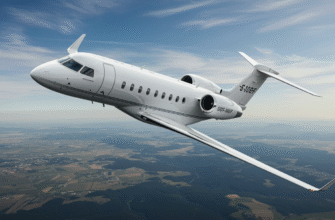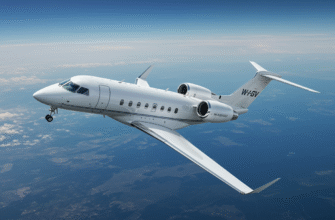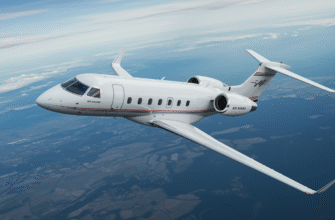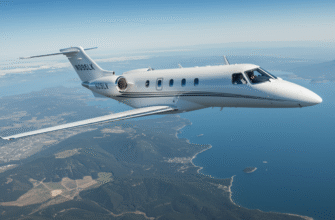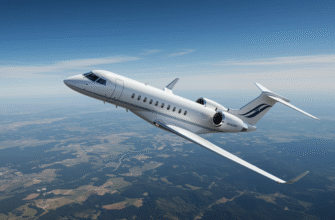For anyone who’s dreamed of owning or flying a private jet, the Learjet 45 always finds a way into the conversation. It’s sleek, fast, just the right size, and carries that iconic Bombardier legacy that has travelers, pilots, and aviation junkies sizing it up. But here’s the twist: not everyone’s on the same page about this jet. Some love it for its precision and polish, others raise an eyebrow over technical quirks and comfort compromises. That’s what makes it interesting—and definitely why it’s worth a deeper look. Is it a baller move to rent one for a quick LA to Vegas hop? Should buyers think twice before swiping the black card? Does its rep actually match how it feels to fly or ride? Let’s dig in, myth-bust a bit, and uncover what the Learjet 45 truly delivers when those cabin doors close and the landing gear kicks up.
What Makes The Learjet 45 A Jet Worth Talking About
It’s not just the name—though “Learjet” carries instant clout. What really gets buyers and flyers buzzing about the Learjet 45 is how it balances private jet fantasy with real-world functionality.
Unlike some showpiece jets, this one has earned its miles with:
- Flat-floor cabin – unlike the drop-aisle norm, you can actually walk without tripping
- Eight-seat real setup – not crammed in, but comfortably arranged in a double club layout
- Entry-level cost of luxury – many pre-owned models go for a fraction of their original price
Sure, it’s not the flashiest private jet in the air right now. But its appeal comes from being a little more understated—business-first, but still brag-worthy.
Now, reputation-wise? People assume “Learjet” equals speed, prestige, and space. And yeah, it’s decently quick at around 533 mph, but it won’t leave a Citation X in the dust. Size-wise, it walks the line between ‘light jet’ and ‘small midsize,’ which does make it feel more breathable than some rivals.
Before renting or buying, folks tend to ask:
- “Is it roomy enough for a cross-country trip?”
- “Can it handle Aspen or Mexico City airports?”
- “Do I need to retrofit the cockpit?”
All good questions—now let’s see how it holds up mid-air.
Performance In The Air
At cruising altitude, the Learjet 45 starts to show off. Sitting at 41,000 feet and above, it outruns the chop that slower, heavier birds are jostling through. Even seasoned pilots have said the first time they hit 51,000 feet, they were a little surprised. Fewer jets in this class climb that high with such consistency—especially while keeping things calm in the cabin.
But while it soars smooth, buyers should come in with real expectations around fuel. The Lear 45 won’t guzzle like a mid-size jet, but it isn’t sipping green tea either. Somewhere around $2,474 per hour means you’re not saving compared to turboprops or newer light jets, but it’s not painful for what you get.
The biggest mixed review comes from pilots handling takeoff at “hot and high” airports. Earlier 45s (before the XR upgrade) tended to be sluggish in locations like Denver or Cabo on a 90° day. The upgraded XR model fixed this with punchier engines, but early models still in use haven’t always caught up.
Pilots do love how it handles once it’s airborne, though. Controls are stable and predictable, and the jet reacts like a more expensive aircraft. Even up at altitude, it keeps a steady line that flyers often compare to super-midsize jets.
Range is interesting here. Yes, it promises 1,700 to 2,300 nautical miles, but that top-end value only happens if:
| Factor | Optimized Condition | Impact If Not Met |
|---|---|---|
| Passenger Load | 4–5 passengers | Reduces max range |
| Weather | Clear winds | Range affected by headwinds |
| Fuel Weight | Full tanks | Less baggage/flexibility |
So yes—it can technically go coast-to-coast. But you might need to plan carefully, choose light packing, and maybe skip the ice sculpture for your in-flight party.
Cabin Experience: Luxe Or Letdown?
Let’s talk comfort inside. This is where expectations and reality don’t always line up.
The seats are buttery leather, configured in a double club—four face-to-face sets that feel almost like a corporate lounge in the sky. They don’t fully recline, but they’re wide and angled well enough for longer trips. Legroom is generous… until you try to stand. The cabin’s ceiling is just under five feet high, so anyone tall will meet it—quickly. You’ll be half-ducking your way down the aisle, a minor but persistent gripe.
Cabin pressurization is great for a jet this size. Even at high altitudes, passengers often note how unbothered their ears feel during descent. The noise levels are another win—quieter than most regional jets and private competitors from the late ’90s and early 2000s. That <72 dB rating delivers a hushed ride more aligned with a luxury sedan than an airliner. Then there’s the amenities: no full-size couch or marble countertop here, but some models come with optional mini-galleys and upgraded cabins. One thing frequently mentioned on trashed charter reviews, though? Older versions of the Learjet 45 sometimes lack streaming tech or USB ports unless upgraded. Pilots got their EFIS early—passengers, not so much. Some amenities that actually work:
- Decent Wi-Fi on upgraded versions
- Enclosed lav—rare and clutch in small jets
- Swivel seats offer almost 360° range for socializing or work
What don’t they tell you? Travelers complain most about how small bags don’t always fit under the seat. Overhead space is tight. You’re better off sticking personal items near you and relying on ground crew for bigger luggage placement.
Passenger stories range from “slept like a baby for 4 hours” to “claustrophobic with no leg stretch room.” It really depends on how it’s configured, and how much personal space you need to stay chill.
Bottom line? Smooth ride, sexy setup—but don’t expect five-star legroom or cutting-edge tech unless it’s a newer, refurbished model. Still, among light jets, it’s got real charm when done right.
Known Flaws, Unexpected Wins
Every jet has its quirks, and the Learjet 45 doesn’t try to hide them. Ask any mechanic who’s seen one too many of these birds in the hangar—they’ll tell you the early models can be picky. Wiring issues and failing sensors pop up more often than anyone would like. One sore spot? Spontaneous auto-pilot disengagement mid-flight. Not ideal when you’re cruising at 40,000 feet. Maintenance costs spike when chasing gremlins like these.
Inside the cockpit, things haven’t aged as gracefully as one might hope. Some 45s still rock early 2000s avionics—a four-screen EFIS setup that’s reliable but now feels very “flip phone chic.” Retro? Maybe. Practical? Meh. On a charter, this matters more to the pilots than the passengers, but don’t expect glass cockpit gloss unless it’s been upgraded post-delivery.
Despite all this, the Lear 45 finds ways to impress. Hourly operating costs hang around $2,500—well below many competitors. Compared to larger Gulfstreams or luxurious Cessna jets, this number legit surprises budget-savvy operators. And when it comes to weather? The 45 doesn’t sweat turbulence. With a 51,000 ft ceiling, it usually flies above storms, shrugging off rough air and crosswinds with grace. She might not be perfect, but she’s tough where it counts.
Who Flies It and Why It Matters
So why pick a Lear 45 when there are G550s and sleek Citations out there? It’s about priorities. Execs and celebs who care more about timelines than champagne fountains like how fast the 45 gets off the ground. It’s straight-line business efficiency.
For charter companies, the love-hate vibe is real. The luggage space and flat-floor layout are huge wins for comfort. But keeping these jets flight-ready? Can be a headache. Still, demand holds steady because clients love how “private” the 45 feels compared to louder cabins in its class.
Some pilots adore the challenge. Others switch to newer fleets after one contract, burned out from regular maintenance calls or missing power on hot-and-high departures. But there’s something psychological about flying a Lear. Bombardier’s badge still brings clout. It’s James Bond cool, even if the gadgets need an upgrade.
Buzz, Stories, and Jet Gossip
Aviation circles stay buzzing with what could’ve been. A rough sketch of a Learjet 45NG version floated through industry whispers early last decade, promising better range and redesigned cabin. Never left the drawing board. Same for the rumored “45 Elite” concept—a ghost ship that never landed.
Whispers about celebrity use never stop. One A-list actor allegedly insisted his onboard snacks be pre-chilled in the lav sink. Another pop star requested black-out window covers for “meditation time.” Ownership is quieter these days—fractional shares and shell corps mask who actually flies.
Then there’s the odd stuff. Someone reportedly had one retrofitted with hardwood floors and zebra-print leather upholstery (not kidding). One jet out of Texas even had a mirror-tiled ceiling. It’s not always about subtle luxury—sometimes it’s about peacocking 40,000 feet up.
Industry folks joke that the Lear 45 has “two personalities”—cool-headed on cruise, stubborn on climb. Hangar talk says if you see ground crews groaning pre-flight, it’s probably a 45 with wiring drama. Still, the jet culture around it is loyal, with just the right amount of scandal to keep it interesting.




